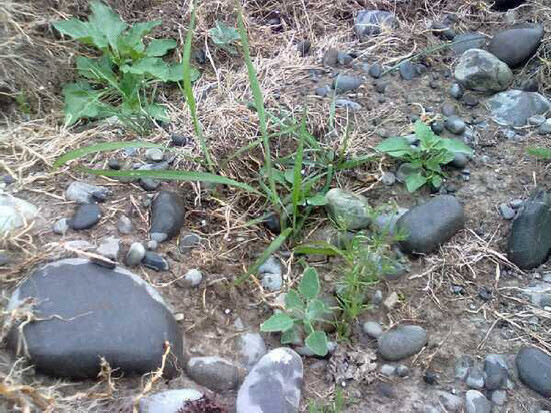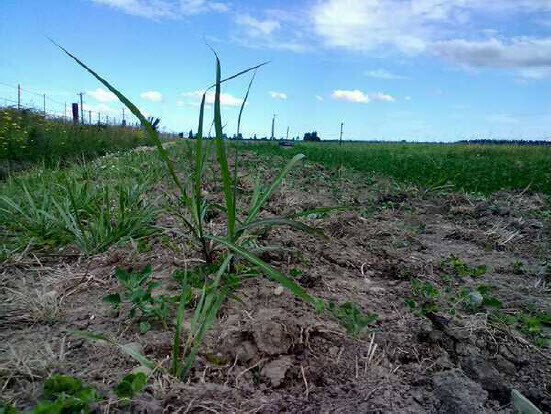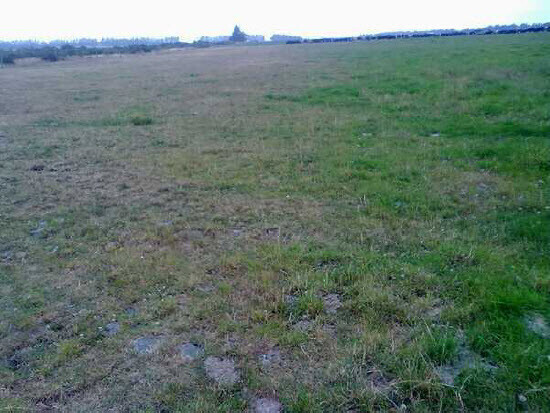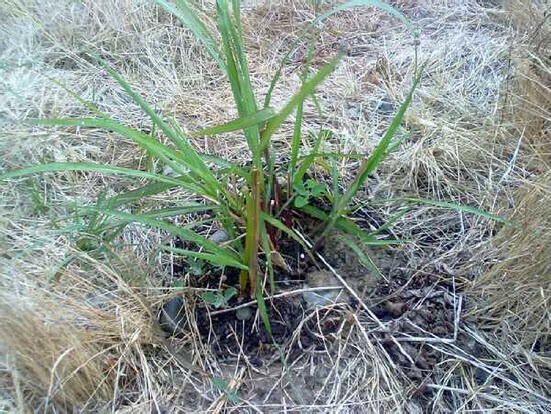January Update
There are now three dairy farms planted with Miscanthus giganteus (MxG) with a total of 10 paddocks being used to firstly investigate the growth potential of the plant itself and also to monitor its effectiveness in providing ecosystem services to dairy farms. There may also be potential to plant further paddocks next season.
Planting has now been completed on all farms with mixed success. MxG plants on Aylesbury Farm needed a lot of emergency watering to keep them alive. Ground conditions were dry at planting with soil moisture falling to 9% and no significant rain has fallen since the 28 mm downpour on Friday 7th December. Fortunately K-Lines were put in place and the MxG areas were irrigated with 24 to 40 mm of water. The Center Pivot came on line just before Christmas and we now have a very good set up for trials work.The plants are now responding well to the increased water availability.
Planting at Karetu has also been very successful. There was more moisture in the soil at planting time, 15%, and on Friday 7th, two days after planting, there was 35 mm of rain fall.
The area of planting is beyond the edge of the Centre Pivot and soil moisture level will now have fallen to 8% as illustrated by grass in front of the MxG dying off.
The MxG however is still green and average height at one month of age, 16 cm, is higher than the 12 cm for plants on Aylesbury Farm at a similar age.
MxG plant in paddock 13 Aylesbury Farm now growing well under irrigation.
Karetu Farm. Edge of pivot irrigation at the back of paddock 15. MxG planted along top left fence line.
The soil here is also very poor and Poplar trees that the MxG replaced struggled to grow. This shows the MxG’s robustness especially if it eventually yields well in such a harsh location.
Karetu Farm. MxG plant growing at the back of paddock 15.
MxG planted in very stony soil on Karetu farm.
Final plantings of four paddocks, three into already dry soil, have suffered due to no rain post planting and very high temperatures. There may have also been some residual chemical present as Gorse in this area was sprayed six days prior to planting. Some plants are still green but the majority have died back except for the one paddock that receives water from the Centre Pivot. Over time the plants may recover or alternatively the area will be re-planted early next year.
t appears that MXG is very robust providing intial soil moisture levels are high enough to allow it to establish itself in the very early stages. If it dries out initialy as on Aylesbury farm it is difficult to sustain. However once established it copes well with harsh conditions as on Karetu farm. On irrigated dairy farms in Canterbury planting well into January is suitable but for unirrigated areas successful planting beyond November becomes very weather dependent.
Future Work
Measurements in the immediate future will be concentrating on grass production in the area influenced by the MXG plantings and also a similar control area in the same paddock not influenced by the MxG.
It ls hoped that over the time of this research protection of grass and clover plants by the MxG shelter will be reflected in improved grass growth and water use effeciency. Water appliction rate and soil moisture levels will also be monitored in the same areas.The Bumble bee motels placed in six paddocks will be checked for occupancy later in the summer. As the MxG matures we may find occupancy rate of motels within the MxG shelter increases over the next two years.
Winter work will involve setting up weather recording equipment, analysing collected data, soil sampling including obtaining a base value for earthworm populations and reviewing existing research. We will look at whether we need to install lysimeters to fully understand how the MxG is affecting water use efficiency and will look at whether we can set up a system of using eddy covariance to monitor gas emisions from sheltered paddocks.
Next summer the detailed effects of MxG on the micro climate of the sheltered area of paddocks will be monitored in detail together with measurements of the shelter effect on photosynthesis and transpiration. To ensure equipment being used is able to record the data required plot trials are being set up this summer on the Lincoln University Nursery Unit to test these in controlled conditions.
Thanks
Finally many thanks again to my three farmers Mark Williams, Marvin Pangborn and Dave Irvine for letting me continue to use their farms for this research and for the help I have received and to Agresearch for letting me use their C-dax pasture meter which I am now in a position to utilise.






